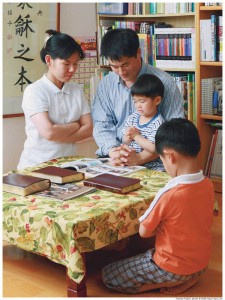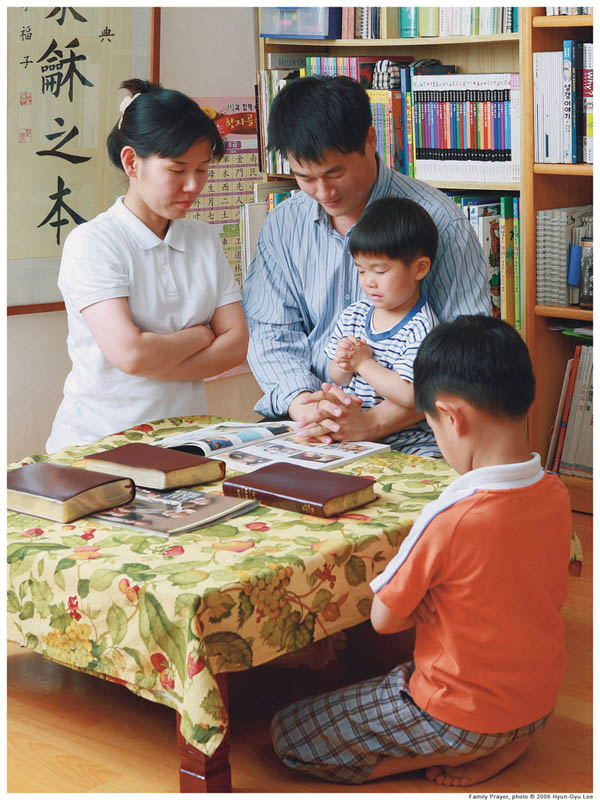The Mormons (a nickname for members of the Church of Jesus Christ of Latter-day Saints) teach leaders to plan their activities with a purpose in mind, and to start with the purpose, not the activity. While this was designed for activity planning, it’s a principle that can be applied to much of our everyday life.
 Mormons are taught not to choose a fun activity and then look over the program goals to see if it fits into anything. Instead, they ask, “What do we want to have happen in the lives of the participants?” Then they select an activity that will accomplish this.
Mormons are taught not to choose a fun activity and then look over the program goals to see if it fits into anything. Instead, they ask, “What do we want to have happen in the lives of the participants?” Then they select an activity that will accomplish this.
Let’s look at an example. A group of teen girls who serve as the leaders for their Young Women’s program have noticed that a number of the girls in their group seem to have no long term goals and just drift aimlessly through their days. They are concerned and want to help them work towards goals. They make a list of things they’d like the girls to focus on, including education. They decide if the girls were excited about a particular career, they might be more interested in going to college, so they decide to begin inviting women who have interesting careers to speak to the girls.
Rather than randomly choosing careers, they think about the specific girls they are concerned about and take note of their hobbies and talents. Then they select careers they think those girls might be interested in and assign people to locate speakers.
They began with a specific concern and worked their way through it to find a practical solution. Then they made a plan for activities that would accomplish the goal. The teenagers did this themselves, with gentle guidance from adult leaders, who asked questions that led the girls in the right direction.
This can be applied to our daily lives as well. As parents, we often have goals for our children and planning with a purpose can help us fill their days with meaningful activities that lead them in the correct direction. We can also apply it to ourselves, as we decide how to use our time meaningfully.
Ann notices her children are becoming spoiled. They have taken to demanding new toys and books and don’t seem to appreciate what they have. She wonders what she can do to help them overcome this. After a while, she decides to take them to visit a family from church that is very poor. The children notice the children in that home have few toys and little clothing, and what they have is old and worn. On the way home, they ask about it and they talk about poverty. She asks them if they know of some way to help those children have more toys and clothing, but says she doesn’t have the money to buy them any. The children decide they could give some of their own things to the family.
Ann continues to plan activities that help the children become aware that most people don’t have what they have. They volunteer at a local food bank and donate things to a family shelter. She both teaches them to appreciate what they have and to serve others at the same time, not by lecturing, but by planning activities that accomplish the purpose. In time, she is able to instill a spirit of giving in her children and they begin to ask for fewer things.
Jana is very busy raising two small children. She feels like her entire day is spent changing diapers, picking up toys, and preparing meals. Her husband notices her stress levels are rising and he offers her a gift of one completely free hour every day. He promises to take the children to a park or even just to play in the living room while she spends one hour doing anything she’d like. Jana, knowing the whole value of a free hour, doesn’t want to waste it, so she spends time thinking about what to do with it.
She makes a list of things she would like to change in her life. One thing is that she’d like to further her education. She decides there isn’t really time to go back to school right now, but there is no reason she can’t learn something on her own. Being new to the idea of doing something just for herself, she decides she has to work up to the concept of doing something for no reason other than that she wants to do it.
She decides to study something that might make her mundane chores more interesting. A friend told her if she understood more about how ingredients work and the technicalities of cooking, she’d like it better, so she creates a course of study about cooking. She spends her hour reading about why you put baking soda into a recipe and what kneading is actually accomplishing. When she cooks, she thinks about these things and uses her new knowledge to adapt recipes. She even teaches her preschooler what she’s learned and they begin to cook together. She planned her hour with a purpose that made her other hours more enjoyable, thereby gaining maximum value from it.
When we plan our time, instead of just letting it happen, we get more value for our time. When we plan it to accomplish specific goals, we feel more satisfaction than if it we just it to keep busy. A long to-do list may be the sign of a productive life, or it may just be the sign of a busy one. Busyness and productivity are not the same thing.
Henry B. Eyring, a high-ranking Mormon leader, said, “The Lord has given us the gift or inheritance of time. He invites and encourages us to spend it wisely. It’s worth investing wisely, not only because we have a lifetime ahead of us but also because we have eternity to come.” (See Henry B. Eyring, “Time-An Inheritance from God,” Tambuli, Aug 1989, 44).
If time is a gift from God, then it’s critical we not waste it. When we plan our days to fill a purpose, rather than just to fill them, we use our gift wisely and make the most of the limited time we have here on earth. In addition, we continue into our next life as prepared as possible.
About Terrie Lynn Bittner
The late Terrie Lynn Bittner—beloved wife, mother, grandmother, and friend—was the author of two homeschooling books and numerous articles, including several that appeared in Latter-day Saint magazines. She became a member of the Church at the age of 17 and began sharing her faith online in 1992.






